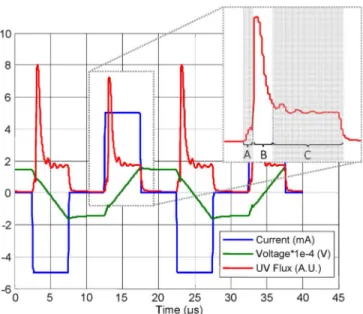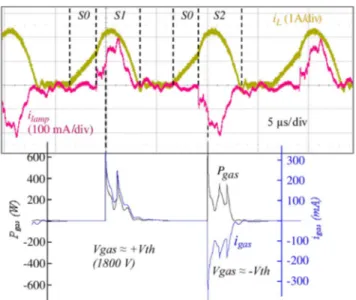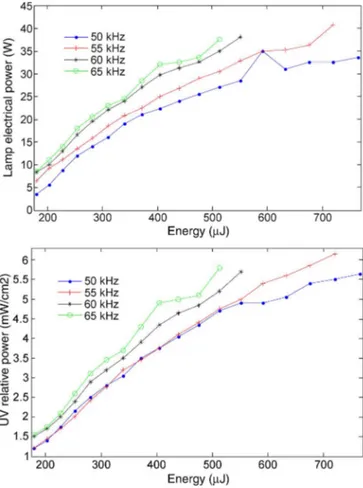Pulsed Current-Mode Supply of Dielectric Barrier Discharge Excilamps for the Control of the Radiated Ultraviolet Power
Texte intégral
Figure




Documents relatifs
The electrode temperature is mainly determined by the thermionic electron emission, by which the current transfer within the cathodic phase is realized, and the extension of the
L’archive ouverte pluridisciplinaire HAL, est destinée au dépôt et à la diffusion de documents scientifiques de niveau recherche, publiés ou non, émanant des
In fact, after the first period, the dielectric surface has a negative charge because the applied potential begins a new period, yielding higher values for the electric field
This effect is more relevant in the case of the Aerogels, in which it is possible strongly reduce their gravitational masses by using sonic waves of low frequency.. Key words:
Different parameters, such as transducer separation (1-12 in), annulus thickness (0-6 in), annulus impedance (free pipe to good cement), casing thickness (0.25-0.45 in),
Mais pour étudier des phénomènes d’accumulation et de transport de charges électriques irradiés avec un faisceau d’électrons, la nouvelle configuration PEA sans
It is important to notice that here, the SR image reconstruction is performed both with the true known motion used in the simula- tion of the synthetic US sequence and with
In 1990 Hofer [Hof90] discovered a bi–invariant metric on (the universal cover of) the group of Hamiltonian diffeomorphisms of a compact symplectic manifold (or the group of

